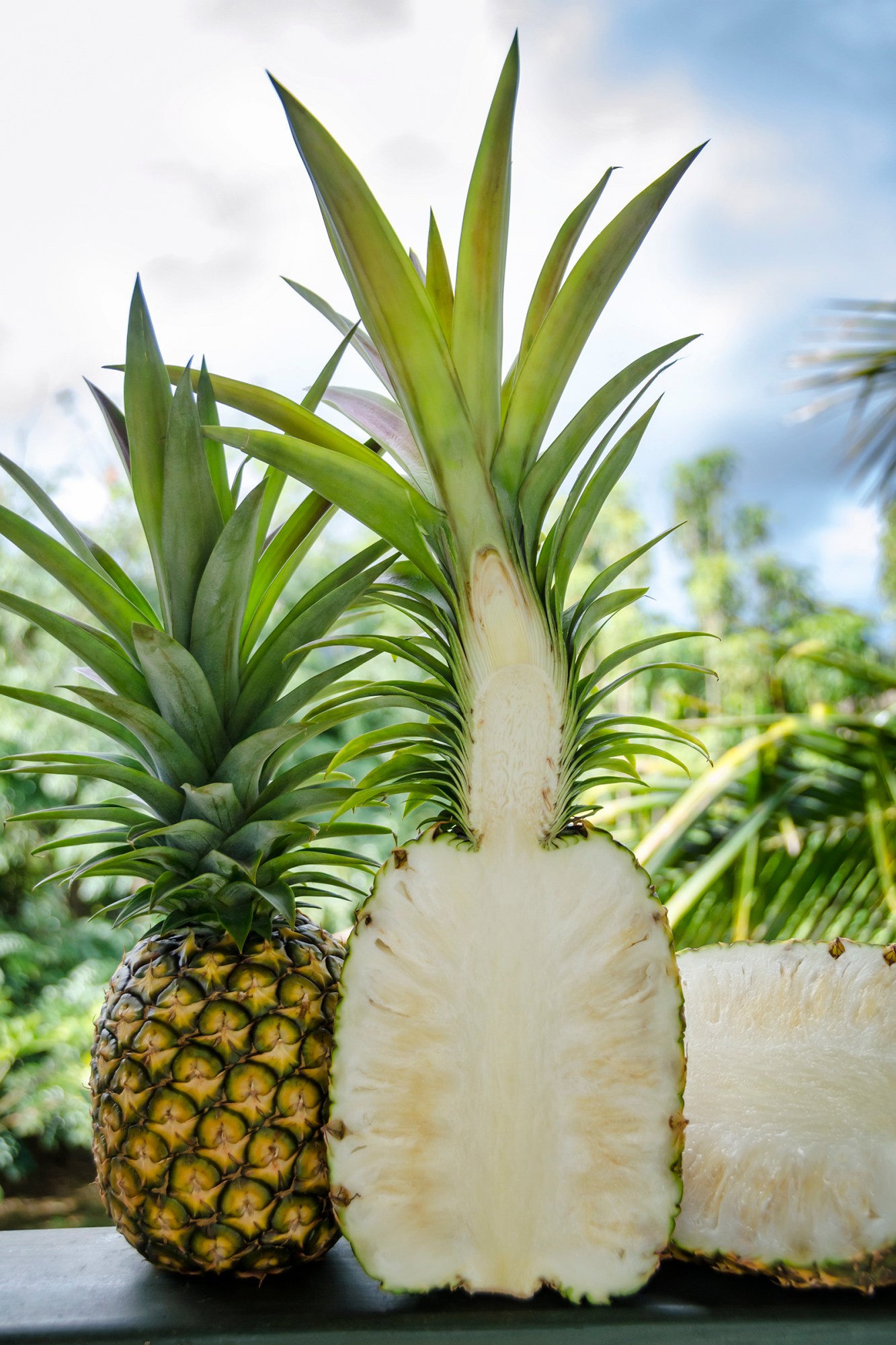Hawaii Pineapple Season


Sugarloaf pineapple almost ready for harvest. Image © Daniel Lane
Everyone wants a fresh Hawaii pineapple and now is the time to get one, because it’s the height of pineapple season. I was reminded of this during our sunrise beach walk as hubby and I walked past two young girls who were standing with their faces absorbed in their smart phones. Tucked between them on the sand sat a small pineapple about the size of my husband’s fist. On Kauai, pineapples are no longer commercially grown on a large scale. Kilohana Plantation grows on about 1-acre specifically for their Luau Kalamaku as well as Gaylord’s, the onsite restaurant. You can purchase fresh Kauai grown pineapples at mom-and-pop stores such as Banana Joe’s Fruit Stand and Living Foods Market. They’re also sold at road side stands, but mostly you’ll find them tucked along shaded tables at Kauai farmers markets.

Ripe Sugarloaf pineapple ranges from burgundy to deep green with bulging eyes that are yellow at the center. Image © Daniel Lane
There are two types of Hawaiian pineapples. “Smooth Cayenne” is the dominant cultivar that’s commercially grown. They are the familiar gold-colored pineapples that are sweet, juicy and acidic. With tender and low-acid flesh, “Sugarloaf” pineapples are a luxurious summertime treat. They are rare and command prices of up to $4.50 a pound. You may reel at this price, but once you have a taste, you’ll want one, no matter the cost. These pineapples are so special, they were featured at last month’s private tasting with chef Jean Marie Josselin during our monthly Royal Coconut Coast Kauai Food Tour.
Stories vary as to the origin of white pineapple in Hawaii. Paul Huber, a Kauai-based Sugarloaf pineapple farmer, says plantation workers on Lanai get the credit. While harvesting in the field, workers found a natural variation of Smooth Cayenne with pale flesh. They valued the tender flesh, and because of its syrupy –sweet taste, they called it Sugarloaf. Field hands brought the unwanted plants home and planted them in gardens. It was never mass-produced because the fragile pineapple complicated commercial production. “You drop it once and it’s mush,” says Paul, who grows more than 60,000 Sugarloaf pineapples. Paul’s wife Jude sells them at the Kauai Culinary Market and Kauai Community Market.

Plants are spiky bushes that grow up to 3 feet tall. In the center, a single pineapple stands like fruit-on-a-stick. Image © Daniel Lane
Plants are spiky bushes that grow up to 3 feet tall. In the center, a single pineapple stands like fruit-on-a-stick. It takes 18 months for the first pineapple to grow. Farmers can harvest two more pineapples before the plant is finished. Pineapple season begins around mid-June, peaks in mid-July and tapers off in September. At Hole in the Mountain Farm, selective forcing on a weekly basis enables Paul to grow and sell pineapples year-round.
Use your senses when selecting ripe pineapple. Smooth Cayenne’s rough skin turns completely gold and a sweet pineapple smell comes off in delightful waves. Sugarloaf is a little trickier because it may or may not have a noticeable smell. Look for skin color that ranges from burgundy to deep green and bulging eyes that are yellow at the center.
Discover Kauai pineapple and meet local farmers during Tasting Kauai’s one-hour farmers market class.
